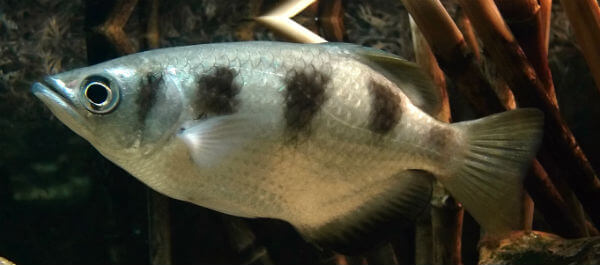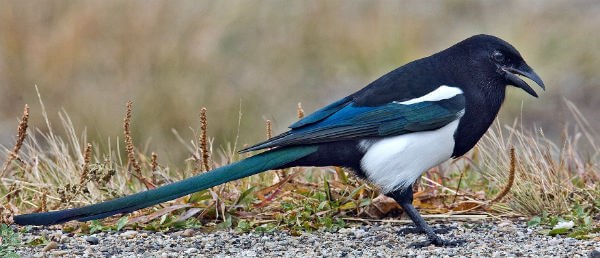Author Archives: Attention to the Unseen
Syria’s secret library
Mike Thomson wrote in July: When a place has been besieged for years and hunger stalks the streets, you might have thought people would have little interest in books. But enthusiasts have stocked an underground library in Syria with volumes rescued from bombed buildings – and users dodge shells and bullets to reach it.
Down a flight of steep steps, as far as it’s possible to go from the flying shrapnel, shelling and snipers’ bullets above, is a large dimly lit room. Buried beneath a bomb-damaged building, it’s home to a secret library that provides learning, hope and inspiration to many in the besieged Damascus suburb of Darayya.
“We saw that it was vital to create a new library so that we could continue our education. We put it in the basement to help stop it being destroyed by shells and bombs like so many other buildings here,” says Anas Ahmad, a former civil engineering student who was one of the founders.
The siege of Darayya by government and pro-Assad forces began nearly four years ago. Since then Anas and other volunteers, many of them also former students whose studies were brought to a halt by the war, have collected more than 14,000 books on just about every subject imaginable.
Over the same period more than 2,000 people – many of them civilians – have been killed. But that has not stopped Anas and his friends scouring the devastated streets for more material to fill the library’s shelves.
“In many cases we get books from bomb or shell-damaged homes. The majority of these places are near the front line, so collecting them is very dangerous,” he says.
“We have to go through bombed-out buildings to hide ourselves from snipers. We have to be extremely careful because snipers sometimes follow us in their sights, anticipating the next step we’ll take.”
At first glance the idea of people risking life and limb to collect books for a library seems bizarre. But Anas says it helps the community in all sorts of ways. Volunteers working at the hospital use the library’s books to advise them on how to treat patients; untrained teachers use them to help them prepare classes; and aspiring dentists raid the shelves for advice on doing fillings and extracting teeth.
About 8,000 of Darayya’s population of 80,000 have fled. But nobody can leave now. [Continue reading…]
Music: Susheela Raman — ‘Salt Rain’
Most city dwellers have never seen the Milky Way
Amanda Petrusich writes: Every civilisation we know of has devised a system – scientific, religious, what have you – to make sense of the night sky. The mystery of what’s up there, where it came from, and what it means has been inherited and puzzled over for generations. Those questions may be the most human ones we have.
Due to pervasive light pollution – glare from excessive, misaimed and unshielded night lighting – 80% of Europe and North America no longer experiences real darkness. For anyone living near a major metropolis, a satellite image of the Milky Way seems abstract: we understand it to be a document of something true, but our understanding is purely theoretical. In 1994, after a predawn earthquake cut power to most of Los Angeles, the Griffith Observatory received phone calls from spooked residents asking about “the strange sky”. What those callers were seeing were stars.
I grew up in a small town in the Hudson River valley, about an hour north of New York City. Like most children, I regarded the night sky (or what I could see of it) with wonder. I understood that nobody could say for sure what was out there. Little kids are often frustrated by the smallness of their lives – as a child, you can conjure complex worlds, but in your own life, you are largely powerless to make moves. Looking up, the tininess I felt was confirmed, but it no longer felt like a liability. If the night sky offers us one thing, it is a liberating sense of ourselves in perspective, and of the many things we can neither comprehend nor control.
“I wish to know an entire heaven and an entire earth,” Henry David Thoreau wrote in 1856. He understood those worlds as separate, but in some essential conversation with each other – to receive one without the other was to misunderstand both. But what happens when mankind divorces itself from a true experience of the cosmos, separating from the vastness above, taming it by erasing it? How can we ever come to know a heaven we can barely see? [Continue reading…]
Music: Refraction — ‘Never Since’
Music: Susheela Raman — ‘Ye Meera Divanapan Hai’
Music: Maati Baani ft. Shankar Tucker and Ankita Joshi — ‘Paayal’
Fish can recognize human faces, study shows

CNN reports: Can your pet fish recognize your face?
A new study says, Yes, it probably can.
Researchers studying archerfish found the fish can tell a familiar human face from dozens of new faces with surprising accuracy.
This is a big, big deal. It’s the first time fish have demonstrated this ability.
Think about it: All faces have two eyes sitting above a nose and a mouth. And for us to be able to tell them apart, we need to be able to pick up the subtle differences in features.
We’re good at this because we are smart, i.e. we have large and complex brains. Other primates can do this too. Some birds as well.
But a fish? A fish has a tiny brain. And it would have no reason in its evolution to learn how to recognize humans.
So this study, published in the journal “Scientific Reports,” throws on its head all our conventional thinking. It was done by scientists at University of Oxford in the U.K. and the University of Queensland in Australia. [Continue reading…]
Music: Quentin Dujardin — ‘1977’
Potentially habitable planet discovered right next door
Scientific American reports: It was just over 20 years ago — a blink of a cosmic eye — that astronomers found the first planets orbiting stars other than our Sun. All these new worlds were gas-shrouded giants like Jupiter or Saturn and utterly inhospitable to life as we know it — but for years each discovery was dutifully reported as front-page news, while scientists and the public alike dreamed of a day when we would find a habitable world. An Earth-like place with plentiful surface water, neither frozen nor vaporized but in the liquid state so essential to life. Back then the safe bet was to guess that the discovery of such a planet would only come after many decades, and that when a promising new world’s misty shores materialized on the other side of our telescopes, it would prove too faraway and faint to study in any detail.
Evidently the safe bet was wrong. On Wednesday astronomers made the kind of announcement that can only occur once in human history: the discovery of the nearest potentially habitable world beyond our solar system. This world may be rocky like ours and whirls in a temperate orbit around the Sun’s closest stellar neighbor, the red dwarf star Proxima Centauri just over four light-years away. Their findings are reported in a study in the journal Nature.
Although technically still considered a “candidate” planet awaiting verification, most astronomers consulted for this story believe the world to be there. Scarcely more than the planet’s orbital period and approximate mass are known, but that is enough to send shivers down spines. Proxima Centauri shines with only about a thousandth of our Sun’s luminosity, meaning any life-friendly planets must huddle close. The newfound world, christened “Proxima b” by scientists, resides in an 11.2-day orbit where water — and thus the kind of life we understand — could conceivably exist. And it is likely to be little more than one-third heavier than Earth, suggesting it offers a solid surface upon which seas and oceans could pool. In a feat of discovery that could reshape the history of science and human dreams of interstellar futures, our species has uncovered a potentially habitable planet right next door. [Continue reading…]
Music: Mali Latino — ‘Ni Koh Bedy’
Music: Quentin Dujardin — ‘Kalaban Coura’
Music: Ivan Paduart — ‘Zen’
Magpies challenge bird-brain myth

GrrlScientist writes: Birds have been disparaged publicly as “bird brains” for so long that most people have lost the ability to view them as intelligent and sentient beings. However, a group of researchers in Germany have conducted a series of studies with several captive European magpies, Pica pica, that challenge the average person’s view of birds and their cognitive abilities.
It is widely accepted in the scientific community that self-awareness is prerequisite for the development of consciousness. Previously, only mammals — humans and several of their cousins, chimpanzees and orangutans, as well as dolphins and elephants — were observed to have self-awareness by demonstrating that they could recognize themselves in a mirror.
However, a new study by a research group in Germany reveals that birds apparently also evolved self-recognition.
“[Our research] shows that the line leading to humans is not as special as many thought,” pointed out lead researcher Helmut Prior of the Institute of Psychology at Goethe University in Frankfurt, Germany.
To do their research, Prior and his colleagues carried out a series of tests with five hand-raised European magpies. [Continue reading…]
Music: Ivan Paduart — ‘Human Being’
The strange case of the butterfly and the male-murdering microbe
Ed Yong writes: Hurbert Walter Simmonds had only been in Fiji for a year before he was appointed as Government Entomologist in 1920. It was an unusual role, but an important one. The island was repeatedly threatened by agricultural pests, and so Simmonds would spend the next 46 years searching for predators and parasites that could bring these crop-destroyers to heel.
In his downtime, he collected butterflies. There are thousands of species in Fiji, and the blue moon butterfly (Hypolimnas bolina) is among the most beautiful of them. The name comes from the males, whose black wings have three pairs of bright white spots, encircled by blue iridescence. They are stunning, and all males look the same. The females are more varied: they are clothed in a wide range of spots, stripes and hues, many of which mimic other local butterflies. Simmonds wanted to know how these patterns are inherited, so he started capturing and breeding the insects.
That’s when he noticed that most of the females only gave birth to females.
Some 90 percent of them would produce all-female broods. They laid large clutches of eggs and around half the embryos died — presumably, the male ones. Simmonds didn’t know why. [Continue reading…]
Music: Quentin Dujardin — ‘Veloma’
Music: Zeb Bangash — ‘Aaja Re Moray Saiyaan’
